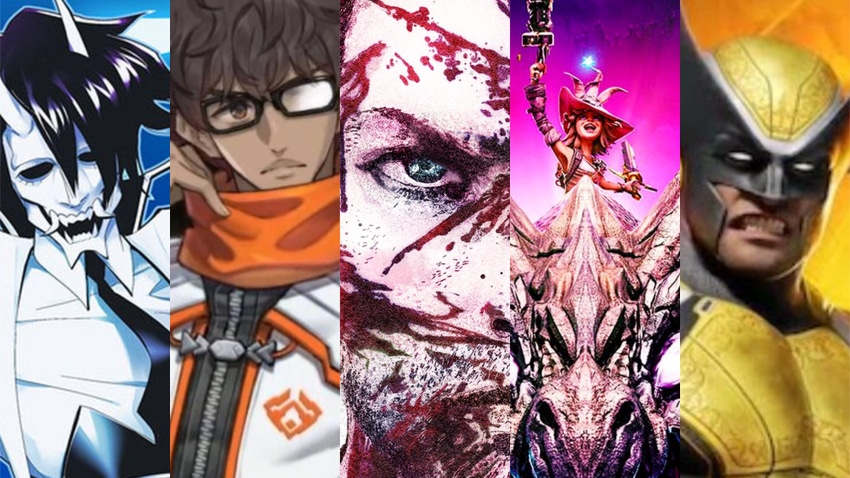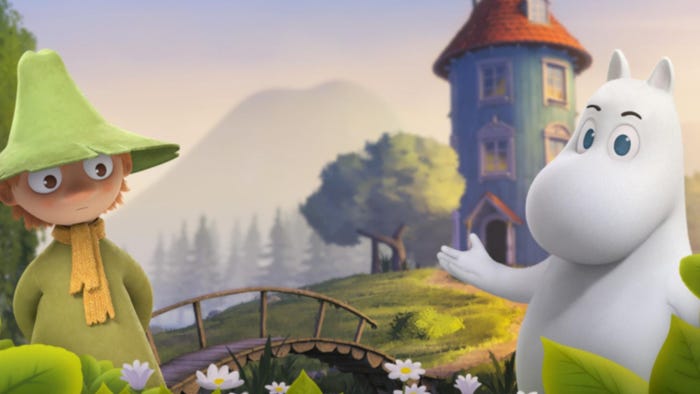Contributing editor Justin Carter looks back on 5 games from 2022 that surprised him with how much he appreciated them.

Tiny Tina’s Wonderlands (Gearbox Software)

Something about Borderlands 3 didn’t entirely click with me back in 2019, and I thought that maybe Gearbox’s shooter-RPG (and sometimes interactive adventure) series lost its appeal for me. But in recent years, I’ve gradually become more of a Dungeons & Dragons guy, so when I heard that Gearbox was doing a spinoff that combined Borderlands and Dungeons & Dragons, my curiosity meant that I couldn’t not give it a shot.
Gearbox previously laid the foundation for a D&D-esque game with DLC for Borderlands 2, so it was maybe inevitable that we’d end up with Tiny Tina’s Wonderlands. Even so, what’s surprising is how much I found myself enjoying the game, especially since I spent nearly all of it playing solo. At times, Wonderlands can feel like a simple reskin, but it has enough under the hood to feel like its own distinct thing from the mothership series. Its gunplay and classes are up there as some of the best in the series, and It maintains that trademark Borderlands feeling of accomplishment and curiosity. When I level up again or find a new gun (or three) that catch my eye, I’m excited to see how I inevitably break the game between the guns and my character build—rocking spinning spectral blade as my wyvern companion flies around lighting everything on fire or lightning never stops being fun.
More than anything, what helps Tiny Tina’s Wonderlands feel like it could be the start of its own sub-franchise is in how seriously it takes the franchise’s marriage with D&D. You see it in how a big-headed version of your character walks around the overworld map, which is littered with food and drinks. You see it in the moments where its tabletop RPG humor feels like the writers consume such games like it’s their life. Most of the time, Borderlands is a series that feels more invested in itself than the player’s adventures. But not entirely unlike joining a tabletop session for the first time, Tiny Tina’s Wonderlands was inviting and friendly enough to lure me back into the franchise and provide me with the old school loot shooter dopamine I’d been missing for years.
Neon White (Angel Matrix)

I came to Neon White later in the year than most other people, though not for lack of interest. From the earliest trailers, it firmly had its hooks in me due to its art direction and guns-as-disposable-cards mechanic, and anything else the game had to offer felt secondary in my eyes. It’d never been a question of “if,” but “when” I’d get around to playing Angel Matrix’s shooter, and I’m glad I played it before the year’s end, because it is tremendous.
Big-budget shooters don’t prioritize speed, and definitely not in the way that Neon White does. Getting around the shattered architecture-heavy environments starts off simple, but opens up as you get a feel for how the cards play into the world. Similar to character action games, it’s the mix of combat and exploration that gives Neon White such a fast and enjoyable pace; being able to quickly reload a level after something goes wrong becomes relaxing, no matter how many times you need to do it for one single level. The game isn’t as high stress as it easily could be, even when the challenge ramps up and you need to rethink your strategy so you get the best completion time possible and the rewards that come with it.
With a group of violent oddballs and a killer soundtrack, Neon White feels very much like an Adult Swim series from the early 2000s. It’s a little juvenile and maybe not entirely on the same wavelength as you, but it’s got an old school charm and enough style that it’s hard to not fall in love with it. Having an angel who looks like a cat (or John Cena, according to Yellow) doesn’t hurt things either.
Stranger of Paradise: Final Fantasy Origin (Team Ninja)

From the moment of its announcement, it was impossible to tell if Stranger of Paradise: Final Fantasy Origin (man, what a title) was aware of its own status as a meme. Killing chaos and Frank Sinatra were the only things people wanted to talk about with that game, and Square Enix had no trouble leaning into that. Were those memes masking an otherwise unremarkable game?
Thing is, Stranger of Paradise is actually pretty great. Its battle system feels punchy and satisfying in a way that the combat in 2020’s Final Fantasy VII Remake was. The franchise’s iconic jobs and classes adapt to real-time combat quite well, and honestly, it’s surprising how well being a roguelike suits the series. Team Ninja has spent years in this particular playground thanks to its Nioh franchise, and the lessons learned from those first two games mean that Stranger is one of the most satisfying action games of the year to play.
It’s also completely, lovably absurd. The actual plot of Stranger and how it links up with the original Final Fantasy is a mess, as far I’m concerned, and I couldn’t tell you the full extent of what really happened until the last few hours. But it’s ultimately saved by its utter “Dudes Rock” sincerity. Jack’s Kratos-like finishers and growly deadpan start to become endearing over time as he bulldozes his way through multiple narrative events and everyone just looks at him in amusement and adoration. The fist bumps and monologues from his fellow Warriors of Light feel more effective than they should. Could the story be told better? Probably, yes, but it wouldn’t be as charming. Whatever faults the game has, Stranger of Paradise seems fully aware of how stupid it is and has made it work.
Marvel’s Midnight Suns (Firaxis)

2022 was a year where Marvel made quite clear it would like to be on everyone’s minds all the time. With multiple movies and shows all fighting for attention, there could only be a handful of winners, and of those standouts, Firaxis’ Marvel’s Midnight Suns wound up as one of the most pleasant surprises.
Marvel’s shown through the years its massive stable of characters can fit into multiple game genres quite successfully. Even so, that doesn’t take away from how weird it seemed at first to learn that Firaxis was making a strategy game wherein the Avengers and a handful of supernatural heroes form an alliance with your OC to fight demon armies led by your character’s (the Hunter) mother Lilith. But Firaxis makes it work, thanks to a card-focused combat system that feels good, and by allowing the heroes’ personalities to come through at every moment. The game shines when the team composition clicks in tandem with the environment and your own card dealing, allowing you to lock in a successful turn with all heroes on hand.
I’ve heard that Midnight Suns feels like a phone game, and it’s hard to argue against that. Going around the Abbey to interact with the other heroes by training or spending time with them, and upgrading the base all feel like they’d be right in line with mobile titles. Even its one mission-per-day structure comes across as mobile-esque; while it breaks the flow, this is balanced out by each new day bringing a sense of accomplishment when a hero returns from a solo mission or a base upgrade is ready to be put to use. Honestly, if the game didn’t have that one-day mechanic, I don’t know if I’d have made it a routine to begin and end each day by hanging out with the heroes and training with them to boost each of their individual relationship levels.
In the end, Midnight Suns is a weird hodgepodge of superhero action, card-based tactics, and BioWare-like relationship systems. It all comes together to deliver one of the year’s best surprises, and a case for why Marvel’s future games should do more than chase the prestige action/adventure template it’s been fixated on.
Xenoblade Chronicles 3 (MonolithSoft)

Xenoblade Chronicles 3 is a game that I didn’t understand leading up to release. I didn’t know of the series before then, nor did I get the importance of developer MonolithSoft releasing the title. Without any real knowledge of the prior games, I gave it a shot based on pure instinct and the appeal of child soldiers fusing into giant mechs.
I’m glad I did. At over 30 hours in and still plenty left to do, Xenoblade Chronicles 3 is scratching an itch I didn’t fully realize I had. Exploring the world and finishing quests (or more accurately: getting into skirmishes while attempting to finish quests) is a good time killer, and it feels like there’s enough of a guiding hand for me to get back on track at my leisure.
As much as I enjoy the combat and all its satisfying flourishes, I enjoy roaming around more, finding materials to trade or craft, and grinding away to make my soldiers tougher. And it’s easy to want the teens to get stronger; they’re all incredibly likable and repeatedly put into situations that make them one of the most compelling RPG parties I’ve spent time with. The world of Xenoblade Chronicles 3 is worth saving and fighting for, thanks to the teens at the center of it and the companions they draw to their cause along the way.
Read more about:
FeaturesAbout the Author(s)
You May Also Like








